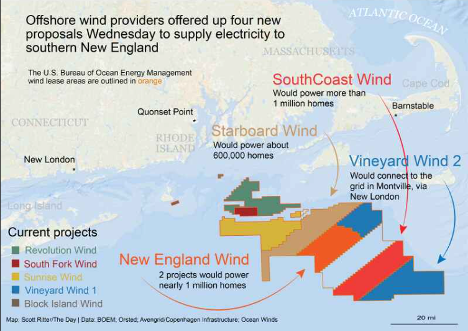The Freedom Car: Is It the Right Solution for America’s Energy Future?
“A simple chemical reaction between hydrogen and oxygen generates energy, which can be used to power a car producing only water, not exhaust fumes. […] Join me in this important innovation to make our air significantly cleaner, and our country much less dependent on foreign sources of energy.” With these thoughtful and inspiring words during his January 2003 State of the Union speech, President George W. Bush introduced the nation and the world to his $1.2 billion Hydrogen Fuel Initiative, a long-term multi-departmental program whose primary objective is to develop the technology and infrastructure to create commercially viable hydrogen-powered fuel cells. These fuel cells, according to the initiative, will dramatically improve America’s energy security by significantly reducing the need for imported oil, while at the same time, provide a means to power an automobile—dubbed the Freedom Car— as well as homes and businesses that produces no pollution or greenhouse gases (EERE). While these goals are laudable and certainly a long-term plan for America’s energy future must be developed, a thorough examination of the means to realizing President Bush’s vision of a commercially viable hydrogen fuel cell powered vehicle reveals a number of crucial details that might lead an impartial observer to a different conclusion than the President and the Department of Energy have arrived at.
Fuel cells are electrochemical devices of various compositions that combine stored hydrogen fuel with oxygen from the air to produce electricity. Because they operate without combustion, they are virtually pollution free, and since the fuel is converted directly to electricity, a fuel cell is much more efficient than internal combustion engines. With no moving parts – a fuel cell is a quiet and reliable source of power (UTC). Despite their recent rise in prominence, fuel cells actually have been around for more than 150 years, having been invented by Sir William Grove in 1839, although it wasn’t until 1932 that the first reliable fuel cell was developed. In the 1950s, fuel cells got their greatest boost when they were chosen by NASA to power manned space vehicles, deemed superior to nuclear fuels due to safety concerns, to solar power for their compact size and to batteries because of their relative light weight. Since then, they have been used extensively in the Apollo, Gemini, Space Shuttle and International Space Station programs (Tse). There are a number of different types of fuel cells, with three primary types in current use or development: alkaline (originally used by NASA on space missions), proton-exchange membrane (these operate at low temperatures and can vary their output making them among the best candidates for light-duty vehicles and smaller applications) and phosphoric acid (the most commercially developed type of fuel cell, currently used in hotels, hospitals, and office buildings, buses and trucks) (Smithsonian). Without a doubt, fuel cells represent a fantastic opportunity to replace polluting internal combustion engines with a chemical reactor that, when in use, creates nothing more than electricity, water vapor and heat.
What could possibly be wrong with pressing ahead with the full scale introduction of fuel cells in passenger vehicles that would, according to the Department of Energy (DoE), reduce America’s greenhouse gas emissions from transportation alone by more than 500 million metric tons of carbon each year and reduce our demand for oil by over 11 million barrels per day, both by 2040? To reach those lofty goals, according to the DoE’s Energy Efficiency and Renewable Energy Information Center, the greatest obstacles to overcome are lowering the cost of hydrogen, creating effective onboard hydrogen storage and creating affordable hydrogen fuel cells; accordingly, the bulk of the $1.2 billion of the Initiative’s funding will be directed towards solving these problems. While these issues are extremely important and vital to surmount, they pale in comparison to the even more comprehensive and fundamental issues facing this objective, namely actually introducing functional working vehicles to the public, the lingering safety concerns over the choice of hydrogen as the fuel of the future, the potential impact that a non-polluting vehicle can have on the environment, and finally, the enormous costs and problems associated with creating, storing and distributing hydrogen to consumers.
In a March 2003 article in the Wall Street Journal, technology expert Jeffery Ball chronicled the problems facing the introduction of commercially viable fuel cell vehicles. For example, even after spending spent nearly $1 billion on fuel cell technology, General Motor’s top technology expert, Larry Burns, says that GM has less than 100 fuel-cell passenger vehicles on the road today and none that are hydrogen-only. And while Toyota advertises vehicles whose only emission is water that are “now on the road and ready-to-drive,” in fact there are a grand total of six of these vehicles currently being tested on American and Japanese roads. Optimistically, in 1990, California proposed requiring car companies to put 20,000 non-polluting vehicles on the road per year, ten years later this figure was cut in half, and in 2003, the number reduced to a mere 250. At about $1 million per car, Ball noted, “the feeling was that fuel cells cost so much that you clearly can’t demonstrate thousands of them.”
DaimlerChrysler has been at the forefront of the effort to create fuel cell powered vehicles, and at the 1997 North American International Automobile Show, Chrysler’s advanced technologies specialist, Christopher Borroni-Bird, stated emphatically that, “We think fuel cell vehicles will be here within ten to fifteen years” (Nauss). Five years later, in the summer of 2003, DaimlerChrysler demonstrated the potential of its fuel cell vehicles by driving a prototype across the country in a feat they compared to Lindberg’s trans-Atlantic flight in its signaling of a new era in transportation. Subsequently, only a few months later, in a written response to the Administration’s proposal to require greater vehicle fuel economy by 2005, the company commented that technologies such as fuel cells “have no hope, in the near term, of reaching high volume or of making a significant impact” (Ball). If one of the global leaders in the effort to develop fuel cell vehicles publicly acknowledges doubts about their viability, one may begin to wonder about their practicality in this all important application.
The authors of the white paper detailing the Hydrogen Fuel Initiative mention that, “Some of hydrogen’s properties require additional engineering controls to ensure its safe use by consumers.” In his article, Ball notes that because of the safety concerns related to hydrogen—which burns without odor or color—DaimlerChrysler technicians wear antistatic lab coats when filling the tanks of their test vehicles, while Toyota executives instructed the single American prototype driver not to park in a garage, both as precautions against a disastrous fire from a hydrogen leak. All gaseous fuels have ranges of concentration at which they burn; natural gas, for example, burns in a narrow range of 5 – 15%, whereas hydrogen can burn anywhere from 2 – 75%. Thus, hydrogen ignites in a wider range of concentrations than natural gas, while requiring a significantly lower amount of energy to ignite, making it markedly more combustible (Wald). Because of these concerns, Ball notes that the first hydrogen stations built in California are peppered with sensors to detect leaks and are blocked off from the public by tall chain-link fences, built in places faraway from the public. Marketers estimate that in order to reach a critical mass with consumers, a new fuel has to be available at more than a quarter of stations in a given area—that acceptance is not only a very long way off but, given the indelible image of the hydrogen-filled airship “Hindenburg” exploding in mid air, a massive effort to convince the public of hydrogen’s safety would have to be undertaken before a roll-out could begin.
The President describes the Freedom Car as a vehicle that produces no emissions. While this may be true at the point of operation, it is imperative to evaluate the total effect on the environment caused by the production of the vehicle’s fuel and its operation combined. The Hydrogen Fuel Initiative envisions that the energy needed to power the process of creating hydrogen will eventually come almost exclusively from non-polluting sources such as solar cells, wind mills, hydropower, next-generation nuclear reactors or experimental bio-mass processes. According to a recent article in Scientific American, though, all of these technologies are either unaffordable or unavailable on a commercial scale and likely to remain so for many years to come.
Currently, it appears that the likeliest source for hydrogen would come from the stripping of hydrogen from natural gas molecules, a process known as “reforming” that emits carbon dioxide, the chief component of global warming. To make matters worse, the cheapest source of energy, throughout much of America, needed to create the electricity required for this process comes from coal-fired powered plants. Thus, utilizing the most common and cost-effective methods for creating hydrogen would further aggravate the dilemma of global warming through the increased release of carbon dioxide and additional power plant emissions (Wald). In addition to greenhouse gasses, a team of atmospheric scientists from the California Institute of Technology reported in the journal Science that the widespread use of hydrogen fuel cells could produce previously unanticipated environmental impacts due to the increased emissions of hydrogen (through storage leaks) and water vapor (the only elemental byproduct of fuel cell power generation) into the stratosphere. This could lead to a further depletion of the ozone layer as well as increasing cloudiness in the stratosphere that could disrupt normal weather patterns leading to hitherto unknown results. And because hydrogen is a nutrient, increased amounts of soluble hydrogen could have unpredictable effects on microbial communities and the food chain in many ecosystems (Tromp). These potential environmental impacts, as well as others not mentioned here, need to be fully investigated before committing our nation to an almost irreversible switch to a hydrogen based economy.
Currently a hydrogen fuel cell costs nearly one hundred times as much per unit of power produced as an internal-combustion engine, with much of that price related to the difficulty of distributing hydrogen. Because of hydrogen’s low density, it is much harder to deliver than other fuels. For example, to move large volumes through a pipeline would require either an enormous amount of pressure or a pipe the diameter of an airplane fuselage, with either greatly reducing the efficiency of the transportation operation. Once at a central distribution point, it would take fifteen tanker trucks to deliver the same amount of hydrogen to fuel the equivalent number of automobiles that one truck of gasoline could (Wald). Even more startling, in a follow-up November Wall Street Journal article, Jeffrey Ball documented the astronomical costs associated with creating the infrastructure of the hydrogen-filling stations across the nation. According to General Motors, the costs associated with creating enough filling stations so that a driver would always be within two miles of a station in metropolitan areas and within twenty-five miles on major highways (11,700 new stations) would be between $10 billion and $15 billion, while Royal Dutch Shell estimated the cost of reconfiguring 44,000 existing gas stations—one quarter of all American stations—would be approximately $19 billion. Both companies made it clear that they expected the federal government to offer massive tax breaks and other incentives to “make companies comfortable investing real money toward what boosters call a hydrogen economy.” Consider these figures against the $1.2 billion the President has pledged with his Hydrogen Fuel Initiative, and one can see the costs alone associated with switching to hydrogen as a mainstream vehicle fuel will be colossal.
Fuel cells certainly seem to have a place in our future economy, with mainstream commercialization soon to begin in applications where the unit-cost of electricity is not important—in cell phones and laptop computers, for example. Eventually, applications may become widespread where constant electricity demands exist, such as power plants or home power and heating/cooling units. According to Wald, however, because of the ratio of high cost in relation to a relatively low output, “cars may be the last place they’ll end up on a commercial sale.” The manager of fuels development for the world’s largest fuel company, Exxon Mobil’s Buford Lewis, puts it bluntly, “The verdict is still out on whether hydrogen will ever become a mainstream fuel” (Ball). If we need to find substitutes for oil for transportation, better alternatives exist, primarily in the form of natural gas, which we have in relative abundance, and environmentally-friendly produced electricity for electric or hybrid vehicles (Wald). One thing for certain is that hydrogen is by no means the fuel of the future “to power vehicles, homes, and businesses that produces no pollution and no greenhouse gases.” In reality, hydrogen is a problematic element that is extremely volatile, difficult to transport and handle, harmful to the environment to create and prohibitively expensive to utilize. In a word invented by the President himself, it is apparent that the problems associated with the wide-scale adoption of hydrogen as a fuel to power automobiles have been grossly misunderestimated.
By John M. Waller
Works Cited:
Ball, Jefferey. “Hydrogen Fuel May Be Clean; Getting It Here Looks Messy.” Wall Street Journal. 7 March 2003.
Ball, Jefferey. “Industries Seek Fuel-Call Funding.” Wall Street Journal. 18 November 2003.
Nauss, Donald. “In Ten Years Your Car Could Be Running on Hydrogen.” Los Angeles Times. 6 January 1997. Rpt. in Energy Alternatives. Helen Cothran. San Diego: Greenhaven Press, 2002. 178-183.
Tromp, Tracey K. et al. “Potential Environmental Impact of a Hydrogen Economy on the Stratosphere.” Science. 13 June 2003, Vol. 300, No. 5626. 1740-1742.
Tse, Lawrence and Duane Bong. “A Brief History of Fuel Cell.” Vision Engineer. 2004. .
Smithsonian Institutue, The. “Fuel Cell Origins.” 2001. .
United States Department of Energy. “The President’s Hydrogen Fuel Initiative.” Office of Energy Efficiency and Renewable Energy Information Center. 13 April 2004. .
United Technology Corpoation – Fuel Cell Division. “How a Fuel Cell Works.” 2004. .
Wald, Matthew L. “The Hydrogen Economy Game: Can the life-cycle efficiency of hydrogen match other options?” Scientic American. May 2004. 68-73.









